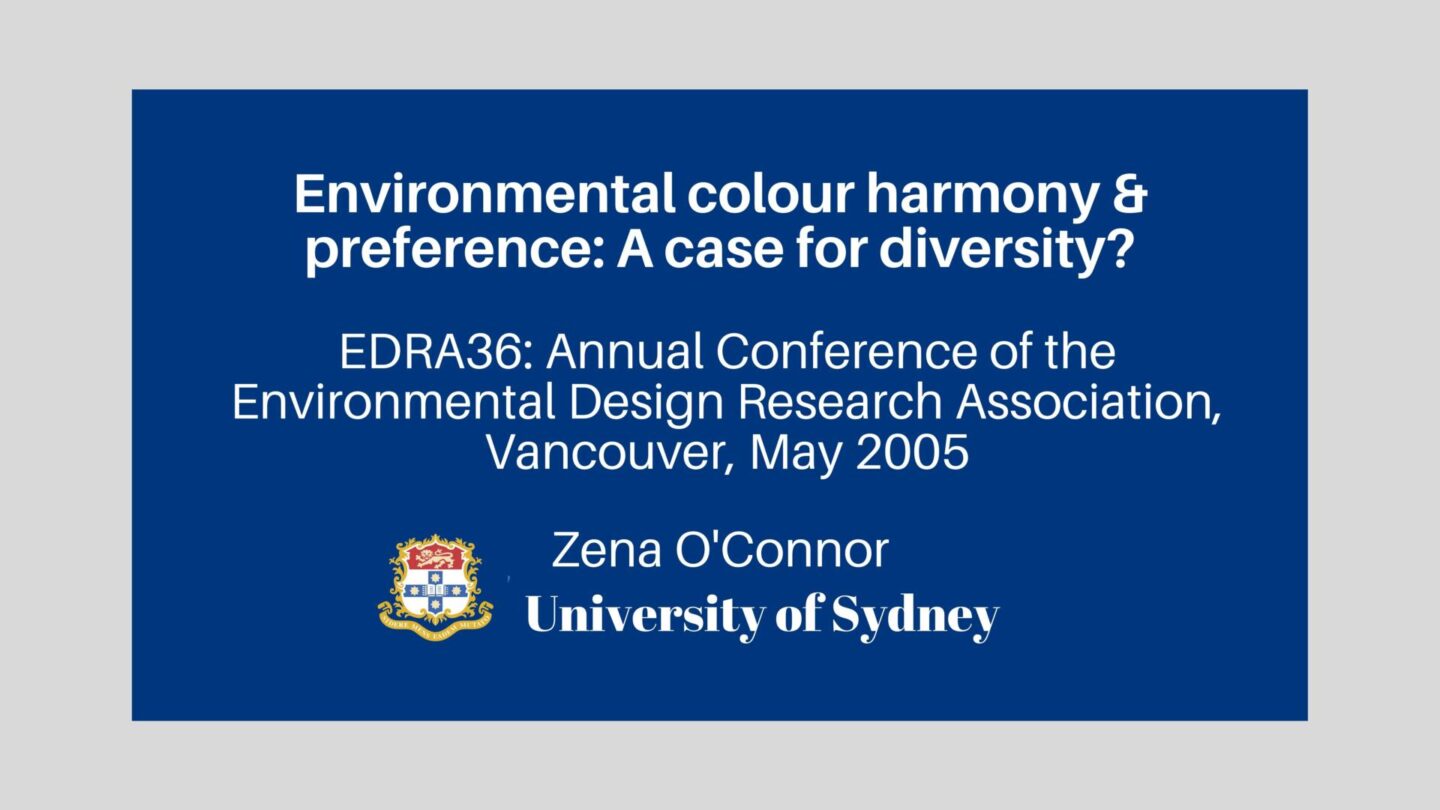
This peer-reviewed conference paper discussed concepts related to my PhD research and I had the opportunity to present the paper at the EDRA conference in Vancouver.
Abstract
Façade colour is considered one of a number of building attributes that influence urban design aesthetics and landscape evaluation. Façade colour is also considered to influence judgements about congruity and contribute to a sense of ‘place’. This particular attribute of the built environment is often mentioned in planning guidelines and the like. However, there isn’t a widely held taxonomy or classification system for façade colour. In Sydney planning guidelines relating to façade colour generally fall into two categories. Some are highly prescriptive and suggest façade colours should match the colours of the surroundings; while others use terms like harmonious, compatible or sympathetic without providing definitions for these terms. These terms seem to be used synonymously in planning guidelines and the antonym for these terms is contrasting.
The main aim of this study was to clarify terms like harmonious and contrasting in relation to façade colour and develop simple classifications or an ‘alphabet’ for façade colour using the terms harmonious and contrasting. An additional aim was to compare these façade colour classifications with preference. An iterative approach was adopted using the nominal group consensus technique combined with Q and F methodology.
This paper reports on the second study of two studies – the first of which was presented at EBRA 2004. The findings suggest that façade colours classified as harmonious exhibit a high degree of similarity with the colours of the surroundings in terms of hue, luminance and saturation. In comparing the classifications of façade colour with preference, façade colours classified as harmonious are not necessarily the most preferred façade colours. Opportunities exist for further research to address some of the issues raised in this paper and add to the current knowledge relating to façade colour. Outcomes may help to inform planning regulators with respect to guidelines specifying façade colour and in terms of the role of façade colour in relation to urban design aesthetics and environmental visual quality.